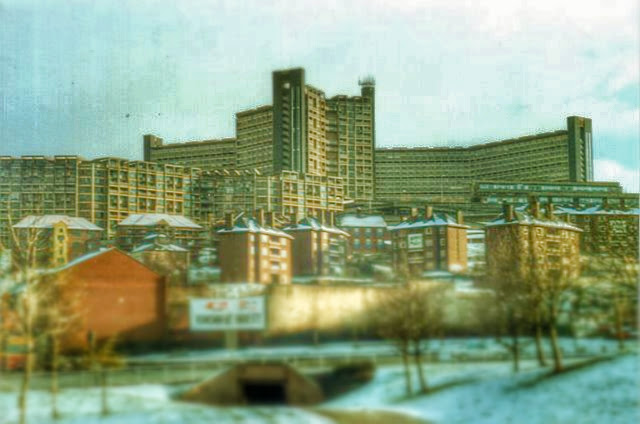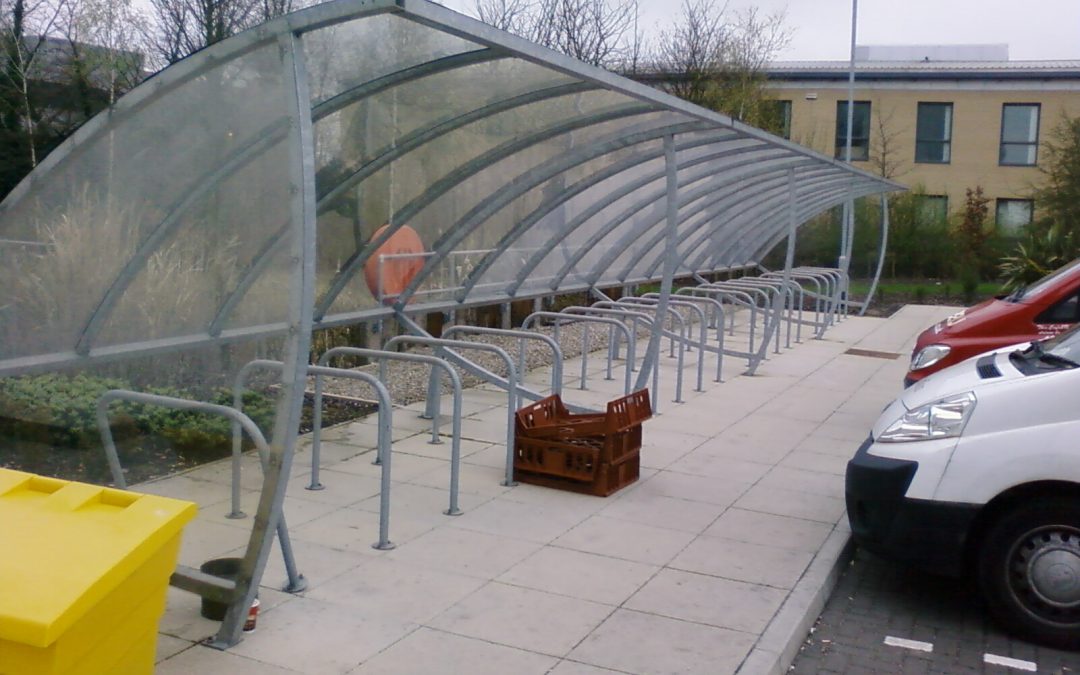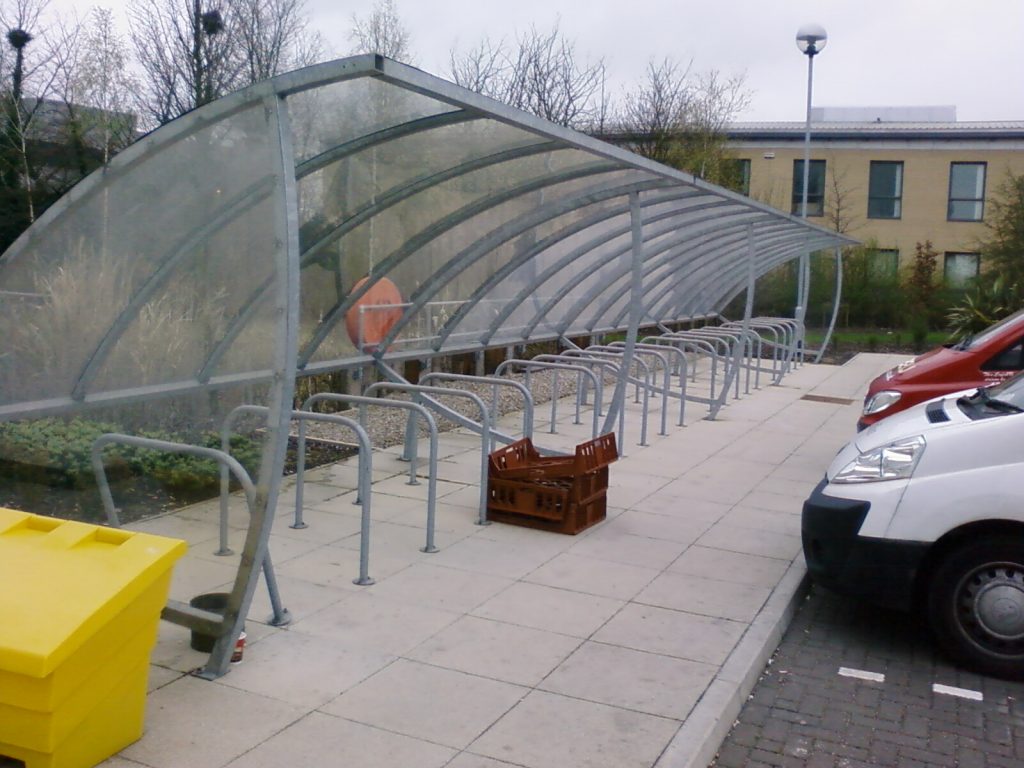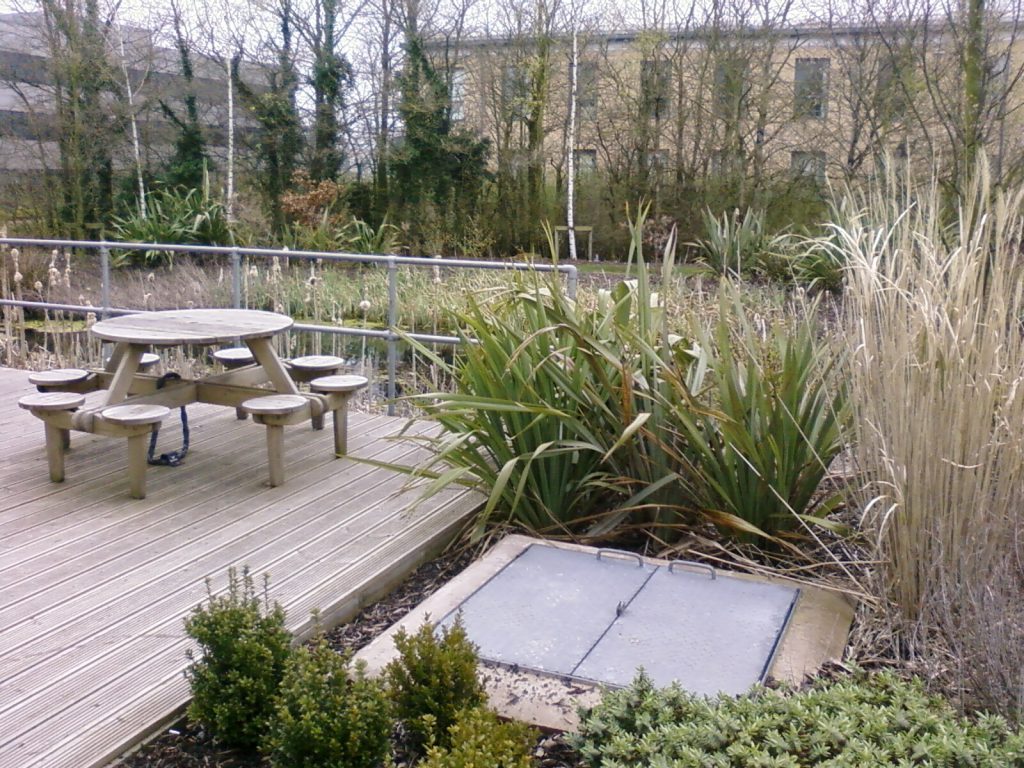
One thing about the property business is that it’s never boring. We like to think that we are pretty good at innovating new ways of creating space and having ideas that make a project happen. Then something comes along which makes us think again.
Right down at the bottom of the planet is where the British Antarctic Survey ply their trade. As challenging locations go it’s hard to think of anywhere more difficult, unless you are partial to a life underwater or inside the cone of an active volcano.
The history of the planet is literally captured right there in the ice. At the moment those clever people are trying to work out how to get the Lake Ellsworth drilling project back on track to discover more about how life can survive and thrive at the extremes – the extremophiles of Planet Earth.
Every Antarctic summer dozens of scientists (and a few extreme pen-pushers, journalists and tourists) join the overwinter maintenance team to study the climate past and present, and carry out experiments in this unique and pollution free environment. That presents an obvious problem; where will they live?

Halley I
A series of research stations have been built since the 1920’s by the BAS, from the wooden huts of Halley I which lasted 12 years, to the steel structures of Halley V. Every single one of them has eventually succumbed to the shifting ice that tears apart the foundations, and the 1.5m of snow that crushes and collapses the roofs in a few short years, even with maintenance.
A decade ago, with Halley V coming to the end of its life-cycle an RIBA competition put out calls for designs for Halley VI on behalf of BAS.
Challenges included the shifting ice sheets and snow mentioned above, as well as the building being transported by ship to be offloaded onto the ice and then dragged ten miles by bulldozer to the site, making design problems like -30 degrees, 24 hour darkness and 30 m/s continuous wind speeds seem trivial.

Hugh Broughton Architects won the competition, and contracts for construction were exchanged in 2006. The winning design eschewed traditional methods and opted for a modular design that looked more like a Star Wars hunting lodge than a laboratory.
In essence, the seven linked pods raise all the living, science, administration and ancillary accommodation into the air along with the life support systems. Each pod has four legs that can be jacked up to allow snow to be bulldozed underneath, keeping the units above the snow and ice build up.
But there is another snag, and it’s a big one. The whole research complex moves about half a mile every year towards the edge of the glacier. Halley I, Halley II and Halley III have all eventually reappeared in the ice-cliff before crashing down into the ocean.

Halley III research station re-emerging from the ice shelf years after being abandoned.
To get around this problem the legs of each pod have giant skis that also allows it to be towed to a new location, extending the lifetime of the whole complex much further into the future than was previously possible.
Construction of the Halley Vi Research Station completed this month (February 2013).You can read the whole, amazing, riveting, story on the British Antarctic Survey project blog.

RIBA competition page
BAS competition support docs

This article was originally written by Tony for the Hull & Humber Chamber of Commerce in Summer 2013.
There’s no denying that construction has been hit harder than most industries by the downturn, and our region has certainly had it worse than most.
The health of the economy is said to be reflected in the number of tower cranes on the skyline. We can all count.
That doesn’t give us the full picture though. High-rise markers might represent certain types of activity but it’s only the very visible tip of one of the UK’s largest industries.
Construction employs over 2,000,000 people in more than 300,000 businesses. Nobody can ignore the construction industry because it will be an critical part of the recovery in the region and Britain as a whole. Besides the people that you see on building sites there are as many employed in design, planning and organisation, and yet more in support businesses from law to stationary.
For all it’s size it’s an odd industry. We still use techniques that are identical to the those used by the workers on the pyramids. It’s fragmented, and often cut throat. People come together to work hand in glove on a project, then disband, often never meeting ever again. Everyone in construction has to fight hard for every project and margins can be in single figures or worse.
In spite of all its foibles and tradition, it is one of the most innovative and collaborative industries we have. The built environment affects all our lives on a daily basis and it’s at the cutting edge of design, manufacturing, carbon reduction and waste elimination – how does 95% recycling sound?
One of the unusual features of the construction industry is that there is always a stock of projects awaiting the go ahead. Once land is secured, designs are drawn up and permissions are obtained, a scheme can wait for years, awaiting the green light. Lead in times for most projects are measured in weeks rather than years and an entire industry can be switched on overnight. This gives construction an huge advantage over many industries – it can literally be switched on overnight and recent announcements by Government are recognising that construction and infrastructure are key part of the recovery.
We deal with hundreds of businesses every year at Think Zero, from the international corporates with turnover measured in billions to local micro-firms looking for ways of creating new opportunities and growth. It’s a privileged position to hear the highs and lows of such a wide range of companies, and some of it would turn your hair grey!
So, where are we today?
The mood music has changed over the last six months. There is a definitely more optimism and positivity.
In 2011 tenders were thin on the ground and many enquires seemed to be pricing exercises. That’s definitely changed. One regionally active main contractor reports that they have priced 37 schemes in the last couple of months – that’s a similar activity level to 2005 for them.
We’re also seeing a lot of last year’s stalled projects coming back to life over the last few months. Buttons are finally being pressed with intent to go on site.

Flemingate Beveley
Major private schemes such as the long planned retail led mixed use project on the former Hodgsons Tannery site on Flemingate in Beverley will create hundreds of jobs during construction and close to a thousand permanent positions when complete. The knock on effects to the general economy will be significant. We can look forward to seeing the impact all across the region from this and other projects as they rumble into life.
The River Humber is once again showing its value as a regional and national asset. The gigantic Able Marine Energy Park project plans for new wharfs, manufacturing warehouse and commercial space over the 2000 acre site on the south bank, putting the Humber firmly at the heart of the UK’s renewable energy and carbon capture industries.

Able Marine Energy Park
You will be pleased to hear that public sector contracts are getting back into gear after the recession and the drastic spending cuts that followed and new procurement bodies are working hard to make sure that local businesses get the best chance to get involved with initiatives such as the Supply Chain Engagement Programme that’s delivered by Think Zero.
New collaborative thinking is driving efficiencies that weren’t imagined just a few years ago. Subcontractors and materials suppliers are rising to the challenge by devising new techniques and products that are faster to build, cheaper to deliver, give lasting environmental improvements and even provide social benefits to our communities.
Despite the downturn in the construction industry East Riding of Yorkshire Council are taking the lead in the area of collaborative construction procurement across the whole of the Yorkshire and Humber region. This approach has led to the creation of a suite of construction frameworks that offer a one stop shop to public sector procurers.
One of these frameworks, YORbuild, has just broken the £300m turnover barrier and is regularly used by over half of the region’s Councils, educational and blue light organisations (fire, police, ambulance) to deliver their construction projects.

Hull Police HQ by BAM
Notable local YORbuild projects are the new £20m Humberside Police HQ in Hull and a new £10m campus for East Riding College at Flemingate in Beverley.
The success of YORbuild has led to the recent launch of YORcivil, a regional civil engineering contractors framework and YORconsult, a regional consultants frameworks. YORcivil has had a busy start with the new £10m A164 upgrade being procured through this framework.
Local business Mason Clark were appointed to the YORconsult framework and have already benefited from a commission to support ERYC with the design of the Bridlington Leisureworld project.
This collaborative approach within the public sector has resulted in cost efficiencies from economies of scale. Steve Baker (ERYC Construction Services Manager) commented that “this joined up approach has also enabled a series of value added initiatives to be introduced that would have been difficult to achieve if Councils were to go it alone.”
These added benefits include:
- An Employment and skills initiative that has delivered an impressive series of outputs on the YORbuild framework to date e.g. 3000 weeks of apprenticeship employment, progression into employment for 316 people
- A supply chain engagement programme offering local businesses who sign up opportunities to tender for sub-contract packages.
- The 4 Good fund which offers grants up to £5k for community projects associated with the frameworks
- A sustainability initiative to reduce carbon and halve waste to landfill.
As the YORframeworks have become established and collaboration widens we now have the emergence of a voice for construction procurement in the region. The YORframeworks are represented on a national group who are actively lobbying government to utilise local arrangements such as the YORframeworks to deliver works rather than relying on centric arrangements.
Another advantage of the YORframeworks is the ability to offer a rapid solution to the procurement of major projects to the benefit the local economy.
ERYC were able to satisfy the Homes and Community Agency that they had the capability to deliver a large housing programme within tight timescales through the YORbuild framework and this led to over £20m of investment in the local economy that otherwise might not have been realised.
So, while times are still tough for many businesses, the Hull and Humber region is now well positioned to respond to future needs in an intelligent and innovative way that’s led by real demand.
There’s light at the end of the tunnel, and hopefully, this time it isn’t a train coming this way.

While rooting through the image library this photograph turned up. It’s of the Hyde Park Flats complex in Sheffield in about 1988, taken for a long forgotten college assignment.
It’s a dramatic (if grainy) image that shows how aspirations for public housing have changed since the 1950’s when Hyde Park was conceived and built as part of the post-war slum clearances. These huge schemes shamelessly followed the aspirations of Corbusier’s Unité d’Habitation streets in the sky principles with large apartments (flats as they were once called) built to take families from the run down housing of the surrounding areas. The entire complex was designed to be almost self sustaining with homes, shops, pubs, clubs, offices and schools.
Sadly the inevitable social problems damned Hyde Park to demolition a few short years after this photograph was taken.
It’s fun to imagine how Hyde Park would look with 21st century architecture, construction techniques and materials.

Sheffield has developed over the years to reach out from the confluence of the River’s Don and Sheaf next to the long gone Sheffield Castle. While this in itself isn’t unusual in British town morphology, what is different in Sheffield when compared to most other large cities, is that the retail area of the city has a single principal shopping street stretching for over a mile.
 In the 1970’s the Government’s Manpower Services Commission decided to move a large part of its functions to Sheffield by opening the Moorfoot Building which effectively cut the southern end of the Moor off from London Road and Ecclesall Road, turning The Moor into a single aspect area. The consequences of this action proved disastrous in later years.
In the 1970’s the Government’s Manpower Services Commission decided to move a large part of its functions to Sheffield by opening the Moorfoot Building which effectively cut the southern end of the Moor off from London Road and Ecclesall Road, turning The Moor into a single aspect area. The consequences of this action proved disastrous in later years.
As the final leg of this ribbon, The Moor has suffered in recent years as the higher quality retail left in the 80’s and never really came back. Subsequent re-style, re-brand and landscaping efforts have proved ineffective.
Since then the offer has become increasingly down-market, the larger retailers including BHS, Marks and Spencer, Habitat, Dixons, Hamleys, Co-Op have left leaving only an out of date Debenhams and the wonderful if a little old fashioned Atkinson’s department store, still owned by the Atkinson family. Neither of these large stores appear to be able to fulfil their potential on the Moor.
The erection of outdoor market stalls in the 1990’s appeared to seal the coffin lid tight shut. That action ensured that pedestrian sight and desire lines were permanently blocked.both physically and psychologically. The stalls have ad-hoc occupation that benefits neither the stall holders, consumers or the built / retail environment.
A gradual but inexorable reduction of shopper numbers caused chain store retailers to concentrate on their other outlets in Sheffield in more viable locations such as Fargate, causing their leases to be given up and the shops to become vacant. Even McDonald’s moved out from their prime position. Many of these were later occupied by discount retailers, many of whom were short term occupiers with little interest in their long term environment. This process became iterative until large numbers retail units became long-term vacant.
Deutsche Bank bought up a large amount of the Moor estate from Sheffield City Council, making them the largest landholder in front of Atkinson’s and Debenhams. DB later bought RREEF and created £750m plans to regenerate their landholding in Sheffield through that vehicle.
In recent months some spot demolition has been taking place resulting in further deterioration of the environment.
 A central part of the proposal emerged to relocate the Market from Castle Market to a new, purpose built structure on the eastern side of The Moor. At first glance this seems like a great idea. It frees up valuable land in the northern sector of the city centre for commercial development and gives an opportunity to reveal what remains of Sheffield Castle – a popular move among Sheffielders.
A central part of the proposal emerged to relocate the Market from Castle Market to a new, purpose built structure on the eastern side of The Moor. At first glance this seems like a great idea. It frees up valuable land in the northern sector of the city centre for commercial development and gives an opportunity to reveal what remains of Sheffield Castle – a popular move among Sheffielders.
However, the recent recession has put paid to any thoughts of a quick turnaround for the Castle district which has suffered similar retail degradation to The Moor in recent years. Removing the markets would create further downward pressure on the Waingate and Angel Street area, resulting in what is now a downmarket, but thriving district to fracture beyond economic repair.
Market traders are rightly concerned that the move to the new market hall will wipe out their business base built up over many years in the Castle Market, and the design for new market hall has received much criticism, especially for the treatment at the rear.
An alternative proposal for The Moor would be a radical redistribution of existing occupiers to the Castlegate area to reoccupy the large footprint retail buildings once occupied by major retailers, releasing The Moor for a new people centric destination district with a mix of uses including shopping, entertainment, office, bar and restaurant.
A short summary of primary actions:
- Clear all the properties in the area bounded by Charter Row, Furnival Gate, Eyre Street and Cumberland Street / Fitzwilliam Gate.
- Zone the development area approximately 50m in from the boundary approximately to the line of Rockingham Way in the west and Earl Street to the east. The northern and southern limits will be Furnival Gate and Cumberland Street / Fitzwilliam Gate.
- Create a naturalistic landscaped parkland in the central zone taking cues from New York’s Central Park.
- Parcel the development zone for high value commercial, residential and leisure uses.



Along with the improved weather, April saw some encouraging indicators that life some is being breathed back into the new homes market from the unprecedented lows seen over the last two years.
During the first quarter of 2010 a total of 31,038 new homes were registered during the period, up from just 17,859 during the same three months of 2009, according to the National House-Building Council (NHBC).
Private developers led the recovery, with the sector registering a 113 per cent jump in registrations year-on-year to 20,538.
Registrations by public sector builders, such as housing associations, rose by 28 per cent during the same period to 10,500.
















